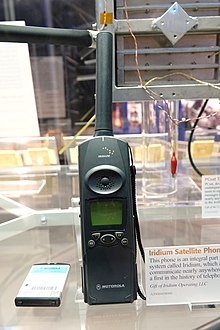Satellite Phone FAQ 2024
Are satellite phones legal in the US?
Yes, satellite phones are legal in the United States for now and in most countries. Satphones are hot right now! But in a few parts of the world, the government might confiscate your satellite phone or even deport you for having the device.
In a few countries like India and Nicaragua, satellite phones are illegal to possess, and other countries like Russia and China require advance registration and licensing of your satellite phone with the local regime. Make sure you are aware of local laws before bringing your sat phone on your great adventure to a foreign land in 2024
Can I turn my cell phone into a satellite phone?
If you want to give your cell phone the capabilities of a satellite mobile phone, there is a device called Iridium GO! that makes this happen. Iridium GO! works like a WiFi hotspot for satellite phone service; you can use your existing smartphone to get truly global satellite connectivity.
Apple has also recently announced that the new iPhone 14 will include satellite connectivity for short-text emergency communications, which Apple calls “Emergency SOS via Satellite” service.3 Apple is partnering with Globalstar to offer this service, which will be free for the first 2 years to everyone who purchases an iPhone 14.
But Apple’s satellite SOS service will be limited to a set of short, custom text messages, with the iPhone guiding you how to point it at the sky at the right angle and time to connect to a satellite. It might take 15 seconds or longer to send a message. If you need more seamless connectivity and elaborate features, you might want to stick to a full satellite communicator or sat phone.
Is it worth getting a satellite phone?
Depending on how much you travel to remote areas; explore wilderness areas; or hike, bike, and climb outdoors, a satellite phone is definitely worth considering. To be safe it's worth it!
Every day around the world, people get lost, injured, or incapacitated in remote areas where cell phones don’t work. Having a satellite communicator device can be lifesaving for you and your loved ones.
Can satellite phones be tracked?
Satellite phones can be tracked—that’s part of their purpose, since they help people find lost or injured people in remote locations. But depending on the device and your satellite phone service plan, you might be able to choose a satellite phone that can go into “stealth mode.”
How long does a satellite phone last?
The battery life of the new best satellite phones depends on the device you buy and on how you use it. For example, the Iridium Extreme has 30 hours of battery life when on standby, or 4 hours of talk time. The Garmin InReach Mini Messenger device has a battery life of up to 46 days with a message or location sent every 30 minutes, but the battery life is reduced to 23 days if you are in moderate tree cover.
Resources:




